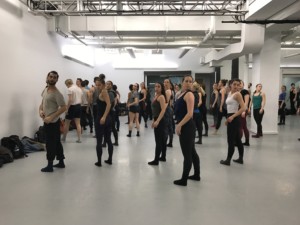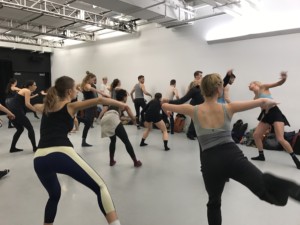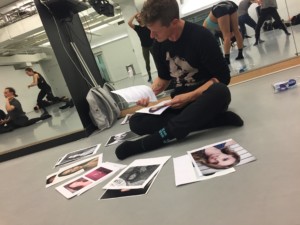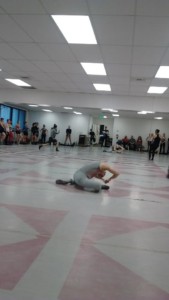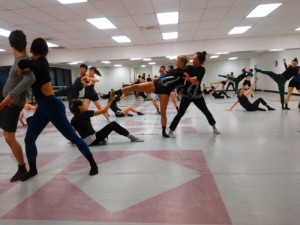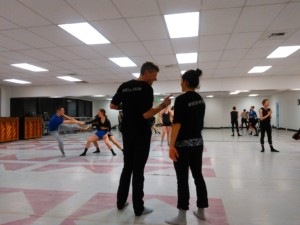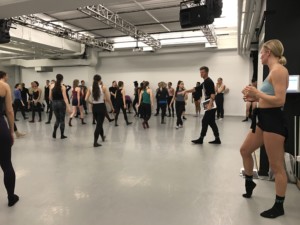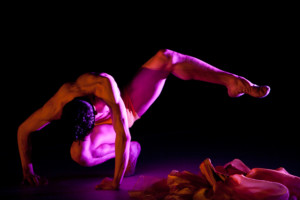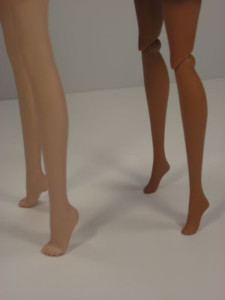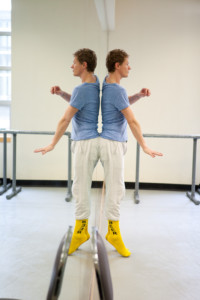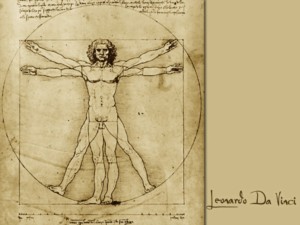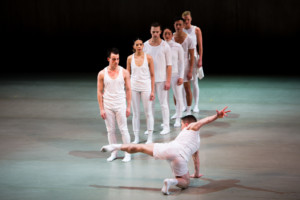There are myriads of dancers out there. It is a real tribute to the magnetic pull of art that a profession which demands such talent, fierce commitment and sheer, unremitting physical exertion, with so few good job opportunities, has so many dedicated practitioners. It’s also a tribute to Whim W’Him’s growing reputation that every year more and more dancers want to try out for the company.
In January two auditions were announced:
COMPANY AUDITION – SEASON 17/18
Whim W’Him auditions for the 2017-2018 season will be held in Seattle on February 18, 2017 from 3:00pm – 7:00pm at The Francia Russell Center (1525 – 132nd Ave NE, Bellevue, WA 98005) and in New York City on February 28, 2017 from 12:00pm – 4:00pm at Gibney Dance, Studio C (280 Broadway, New York, NY 10007).
- Whim W’Him is seeking experienced dancers
- + Contemporary background
- + Strong classical training
- + Committed to the creative process
- + Partnering skills encouraged
- + Works well with others
- + Dancers must be at least 18 years old
- + Able to work legally in the USA
- For a minimum of 28 weeks contract in Seattle, WA (June 2016 – June 2017)
REGISTER VIA EMAIL (audition@whimwhim.org)
- Name, address, phone number, email, DOB, gender
- Resume
- Headshot
- Video links of studio or performance footage
Advance material must be received two weeks prior to audition dates
BRING TO THE AUDITION
- Resume
- Headshot
- $15 Registration fee (cash or checks made payable to ‘Whim W’Him’)
- Socks are the required footwear for the audition
Some 300 dancers applied. Hard to choose among them, but the number was way too big.
Before the actual audition in New York, Whim W’Him artistic director Olivier Wevers held two workshops for about 25 dancers each, one of all women, the other with men too. At $30 per participant, workshops helped to defray WW travel costs to New York, but more importantly they allowed dancers to get an idea of what is liable to be asked of them in the audition and let Olivier see more of at least some dancers’ work. At the workshops Olivier talked about the company, his vision for it, what he is looking for in dancers. He also created new material on the spot, to give the dancers a feel of how he works, and had them do some partnering work.
At both auditions, the large number of dancers accepted (45 in Seattle audition and 68 in NYC) required splitting the group. All the dancers learned a passage, half watched while the other danced. A good deal of the audition process also involved improvisation. “Be yourself,” Olivier asked the dancers, “and show me how you love to move when no one is watching.”
About halfway into each selection process, Olivier retained smaller group of dancers 16 dancers to do some further work in trios or quartets.
For the Seattle audition, the company’s three women Tory Peil, Mia Monteabaro and Liane Aung demonstrated and helped the dancers learn segments from company works.
In New York it was Tory in addition to Olivier who led the dancers.
For me, observing the process in Seattle, the most interesting aspect was how aspects of Whim W’Him and particularly Olivier’s style were described and demonstrated. Not surprisingly, feet are, a big issue, beginning with footwear. Whim W’Him’s Instagram hashtag is #wedanceinsocks (a NY dancer who choose to work barefoot, after being explicitly asked to put on socks, was simply ignored at the audition).
There are ways in which feet are typically deployed by Olivier. Using all sorts of images, he makes a great deal of the need for them to deliniate a pattern: “As if a long-exposure light is drawing a path”; “Like a peanut butter track”; ‘The toes are always suction-cupped to the floor”; “Like there’s flour on the floor and your two feet trace a path on the floor.”
Olivier’s signature foot position for this tracing—since early in the existence of Whim W’Him—is what he calls the ‘sickle-pickle,’ a strong, energized inward-turning foot in striking contrast to the classical ballet turnout.
A related shape is so-called ‘Barbie feet’—essentially the form a foot takes on in high-heels, but without the shoes.
“Always want to be a pigeon—foot a bit in, never out,” Olivier advised, then added, “Toes might be pointed—though not flexed, rarely flexed. But toes must always be active.” And so must everything else. Again and again, he, and the other company dancers focused on the need of the dancer to be aware and engaged with each part of the body and its relationship to the space around.
“I invite you to move big—get outside of your bubble.” Olivier said at one point, referring to the famous Da Vinci diagram. “Always reach beyond with your head, your elbows—everything.”
There is a lot of non-traditional partnering in Whim W’Him pieces, whether choreographed by Olivier or one of the numerous outside choreographers the company invites. Whoever is being lifted or partnered must not be passive . “Everyone always is doing part of the partnering, even when you’re being lifted or dragged,” Olivier said, and Tory added, “Men, you really have to carry your own weight, you’re making yourself accessible to them from every direction. Not just hanging there with legs flopping.”
Crucial and central to everything is the emphasis on strong, individual, expressive dancers, both independent and sensitive to each other, whether they are working solo, with one or two others, or even standing in a line.
